This article discusses the must try food in El Salvador!
El Salvador is one of the lesser-known countries in Central America. For a lot of different reasons, it is the country I have visited more times (lost count but over 8 times).
Because of that, I can suggest you a compelling reason to visit this beautiful country blessed with mighty volcanoes and wide beaches. That reason is FOOD!!
You may not believe me but the food there is great. The variety is immense. And, when I am talking about variety, I am not just talking about a huge selection of dishes and cooking techniques. I am also referring to the different types of proteins, veggies, and fruits that can end over your plate. Gulp! More about that later.
In this post, I want to give you a good idea about the food you should try in El Salvador. Remember: this is just the tip of the iceberg. It is not possible to describe the national gastronomy in 3,000 words or so.
I just want to introduce you to the delights of this Central American gem. Who knows? Maybe one day you will feel the urge to go and eat your way around.
Photo by Ll1324
Table of Contents
What to Know
The food in El Salvador has been heavily influenced by Native American (mainly pipil and lenca) and Spanish cuisines.
Most popular dishes are corn-based and ingredients such as beans, rice, pork, seafood tomatoes, yuca, and squash can be found on the daily diet.
I find fascinating the number of unique ingredients used in the food in El Salvador. A lot of what is eaten nowadays in the territory dates back to hundreds of years. Throughout this article, I will do my best to describe these special ingredients.
Now, sit back, relax and start dreaming about Salvadoran food.
Food in El Salvador – Savory Dishes
This is the part where I tell you everything about the most iconic dishes of Salvadoran cuisine. Be careful since you may start drooling uncontrollably!
Desayuno Tipico (Typical Breakfast)
You cannot leave the country without having at least one desayuno tipico. It consists of scrambled or fried eggs, fried plantains, casamiento (a mix of rice and beans), Central American cream (saltier than Mexican cream) and fresh cheese.
You may find regional varieties in terms of additional items added or cheese type. Almost every restaurant specializing in Salvadoran food will have this dish on the menu.
Tip: If you order your eggs scrambled, they will usually be mixed with tomatoes, onions and green bell peppers. Ask your server what is included at the order time. Scrambled eggs in El Salvador are known as “huevos picados.”
Pupusas
Pupusas are probably the stars of the Salvadoran cooking universe. They are thick corn tortillas (or flatbreads) filled with ingredients like cheese, chicharron (cooked shredded pork), refried beans, and loroco (vine flower bud).
Another famous filling is made by combining cheese, refried beans, and chicharron. This combination is called pupusas revueltas (yum, my favorite).
Some creative minds are getting fancy with pupusas and they are filling them with ingredients such as ayote (a type of squash), spinach, mushrooms, garlic, carrots, shrimp and chicken. They are also made of leaves like papelillo, cochinito, mora, and chipilin.
Pupusas are usually served with curtido (fermented cabbage, sometimes chiles and/or cucumbers are added) and tomato sauce.
A good pupusa is prepared after ordered and served piping hot. Keep in mind a pupusa is eaten with barren hands. Once they are served, you place some curtido and sauce next to them, open the pupusa and start grabbing the curtido with pieces of the pupusa. Or, you can open the pupusas, put the curtido and sauce over them and start grabbing the curtido with pupusa chunks.
In El Salvador, pupusas are found literary at every corner. Now, ask a local for recommendations on where to find the best pupusas. I ensure you people are passionate about the food topic.
If you are based in San Salvador (at least for a couple of days), some establishments to try include Tipicos Margoth, Pupuseria La Antigua, Pupuseria Kathy and El Rincon de Olocuilta (various locations).
A lot of people say that the best place to eat pupusas is at Planes de Renderos. Los Planes (as everyone calls it) is a high elevation urban center located within the San Salvador metropolitan area. The views of the city, the San Salvador volcano, and the Ilopango Lake are fantastic from here. The best part is that there are many restaurants offering tasty pupusas. Some even offer live music. Try to include this place in your plans!
Photo by manda_wong
Rice Pupusas
There are also pupusas made of rice flour. Many consider the rice pupusas more delicious than the corn-based pupusas. This type of pupusa is hard to find outside of El Salvador. If you visit, make sure to try it.
The town of Olocuilta is considered the birthplace of this delight. Olocuilta is located in the highway connecting San Salvador to the international Comalapa Airport. So, a quick stop before or after a flight does not hurt anybody.
Other Pupusa Varieties
In the town of Ahuachapan (on the west side of the country), there are several restaurants that sell the pupusa loca or crazy pupusa. This is an extra-large pupusa (the size of a personal pizza) stuffed with everything you can imagine (cheese, beans, chicharron, shrimp, ham, onions and peppers). I need to have one of these every time I go to El Salvador. You should try it too.
The pupusa loca has become very popular in recent years and now it can be found throughout the country.
Last time my husband visited the country, he tried pupusas made with yucca flour. That may be the next great thing (or, maybe not).
Fried or Boiled Yuca
As a Puerto Rican, I love yuca (or cassava or manioc). Therefore, I jumped of happiness when I found out yuca in consumed in droves in El Salvador.
A good old plate of yuca is served with curtido and crunchy pork rinds. Sometimes chimbolos (small fried fish) are added. You can choose to have the yuca fried or boiled (I prefer boiled).
You can find good yuca in the town of Salcoatitan (Ruta de las Flores), Ahuachapan and San Salvador (Tipicos Margoth).
Panes Rellenos
This is another delicious option in El Salvador. Get ready to get stuffed.
Panes rellenos are sandwiches (sub-style) filled with stewed turkey or chicken, sliced tomatoes, onions, lettuce, watercress, radish, cucumbers, and escabeche. After the sandwich is assembled, the thick broth is poured over the ingredients (that may be the best part).
Escabeche is prepared by combining cabbage, carrots, green beans, onions, mustard, oregano and other ingredients in a hot pot (escabeche is cooked as opposed to curtido which is pickled).
There are discussions of whether the “panes” should have mayonnaise or not. I like mine with mayonnaise. There are regional varieties of this dish. In some parts of the country, sliced boiled eggs or beets are added.
Flor de Izote
The Flor de Izote, an edible palm flower, is the national flower of El Salvador. And, guess what, Salvadorans eat their national flower. That is what I am talking about!
Most people stick to eating the petals and compare the taste to artichokes. This is a seasonal treat since the flowesr bloom in spring and summer.
In El Salvador, the flores de izote are eaten pickled, steamed and scrambled with eggs.
Note: The flor de izote can be found in some parts of Mexico as well.
Pollo Encebollado (Chicken with Onions)
The pollo encebollado is a chicken stew with lots of onions, white wine, butter, garlic, mustard, Worcestershire sauce, bay leaves, pepper, and salt. The dish is started by marinating the chicken. Then, the onions are browned and the chicken is added with the wet ingredients and water.
The result is served with white rice and green salad.
Relleno de Pacaya (Pacaya Palm Flower Wrapped in Egg)
As you may have read, the dishes in El Salvador include edible parts of several plants. For example, I have mentioned the loroco, chipilin and izote. Another unique edible flower is the pacaya (which resembles an ear of corn).
Pacayas are prepared in several ways but most people eat it as a “relleno.” In this dish, the pacaya is stuffed with cheese, wrapped in egg batter and fried (like a chile relleno). The result is served with tomato sauce, rice, and green salad.
Be aware that pacayas have a bitter taste.
Salpicon
Salpicon is a minced meat salad served over tostadas, with tortillas or as part of a bigger dish. It is a great inclusion on a hot day!
Flank or skirt steak is thinly cut after being boiled. Real pros can achieve a very fine result with a knife. Once chopped, the meat is mixed with white onions, radish, peppermint, lemon, salt, and pepper. Others add tomatoes, cucumbers or jalapenos. The dish is served cold.
This is another classic of Salvadoran cuisine. I recommend giving it a try if possible.
Sopa de Pata (Cow’s Feet Soup)
Many Latin American countries have a variation of sopa de pata in their roster (menudo, mondongo).
This is a classic soup made with beef feet, beef tripe, yuca, celery, carrots, garlic, cumin, onions, and other vegetables. The preparation is laborious but the result, a thick, flavorful broth with tender cuts, brings to life everybody that has a plate of it.
You can add chopped onions, fresh cilantro, and lemon as desired. The sopa de pata tends to be a weekend dish.
Gallo en Chicha (Rooster Stew)
The main ingredient in this delicious dish is a rooster. Most of us are used to consume chicken which is young and tender. Roosters are muscular and this gives them a hard or chewy consistency.
The secret of this dish is to marinate the rooster overnight in chicha, a corn fermented drink. The chicha will make the roster tender. Onions, peppers, mustard and, sometimes, Coke, are added to the marinade too.
The next day, the rooster is separated from the liquid marinade and pan-fried until crispy. The marinade liquid is mixed with other ingredients to prepare a stew. The resulting stew is poured over the rooster and served with rice and green salad.
Sopa de Gallina India (Hen Soup)
In El Salvador, hen soup is not your typical chicken soup. A “gallina india” is a hen raised in the countryside. These hens diet consist of corn and other natural ingredients found in their environment.
Because of the living condition, the “gallinas indias” are full of flavor. In a soup, they are served with chayote, potatoes, carrots, squash (pipian) and corn ears.
Tamales
In El Salvador, you can find a huge variety of tamales.
The most popular tamales are made with a corn-based masa. The masa is usually seasoned with chicken stock and filled with meat, pork or chicken (potatoes and olives are added too). The tamal is wrapped in a plantain leaf before being steamed. The result is served with curtido and tomato sauce.
The tamal pisque follows a similar preparation but it is filled with refried beans.
Sweet corn tales (I love these) are prepared with white fresh corn, cornflour, and sugar. They have no filling and are wrapped in a corn husk. The result is served with cream and fresh cheese. They make a super delicious breakfast.
Another specialty (and, you have to try this one) is the chipilin tamal. Chipilin is a small, aromatic leave. To prepare the tamal, corn-based masa is mixed with the chipilin and wrapped in a corn husk. After being steam, it is served with curtido and tomato sauce. Some people fill the tamal with soft cheese. Sound simple but this a flavor bomb.
Photo by Nsaum75
Riguas
A rigua can be described as a flat corn cake. I love to have them with cream and fresh cheese.
The preparation consists of grinding or blending corn kernels, salt, and sugar. The resulting masa is placed between plantain leaves (or other leaves that can resist heat) and cooked on a griddle.
Riguas are served with cream, cheese or curd (cuajada).
Grilled Meat and Chicken
Around the country, you are going to find a nice selection of grilled meats (different cuts), chicken, sausages, shrimp, ribs, skewers, and cheese. The different grilled proteins are served with refried beans, avocado and chimol (similer to pico de gallo).
You can find grilled specialties in restaurants, markets, food fairs, and food courts. El Guapinol, an establishment usually found inside malls, serves super tasty combos. I will choose this place over any fast-food chain any day.
Mariscada (Seafood Soup)
A visit to El Salvador is not complete without a mariscada, a soup prepared with several fruits of the sea. The mariscada can contain ingredients such as white fish, shrimp, squid, clams, octopus, onions, garlic, and other ingredients.
The idea is to have a mariscada next to the sea (of course). However, many restaurants in inland cities serve the dish.
Coctel de Conchas (Blood Clam Cocktail)
The blood clam or blood cockle takes its name from the red or dark liquid found inside the shell.
For a cocktail, the raw clams, their liquid, onions, tomatoes, cilantro, parsley, lemon, Worceshire, sauce, and hot sauce are combined and served on a tall glass or bowl. Some people (like my husband) adore this dish. For others, it is a big no-no.
I recommend trying a bit before ordering an entire cocktail. Make sure you are buying this cocktail from somebody who uses fresh clams and knows how to handle them properly.
You can try one of these cocktails on a beach town (Acajutla, Puerto de la Libertad, El Cuco) or in a market. By the way, you can find all sorts of cocktails in El Salvador (fish, shrimp, octopus, and combinations).
Chorizos de Cojutepeque
The chorizos from this town are famous inside and outside of the country. Beef and pork are grounded into little balls and tied with corn husks between the links.
You can try them anywhere in El Salvador but it is better to try them in one of the restaurants located in Cojutepeque. Restaurants located at the Cerro Las Pavas offer grilled chorizo sampler plates. They are served with avocado and cheese and are beyond delicious.
Cheeses
You get into an entire universe when you start talking cheeses. Therefore, I am going to touch this topic briefly.
In terms of hard cheeses, you are going to find varieties like duro viejo, a hard, dry cheese used for crumbling and duro blando, a softer (with more moisture) variety. Duro viejo cheese is kind of funky (at least for me). It is usually served over beans, bean soup and enchiladas (in El Salvador, enchiladas are tostadas).
Duro blando cheese can contain herbs or flower buds (like loroco). It is served as a side with different dishes.
On the soft cheeses realm, you will find cuajada in many houses and restaurants. Think about it as fresh cheese (to me it has more flavor than Mexican fresh cheese).
And, I cannot leave this section without mentioning my beloved requeson. In theory, it is the same thing as ricotta (which is not cheese). The one in El Salvador has a creamier texture and a hint of salt. I love to have it with sweet corn tamales.
Food in El Salvador – Dessert
A culinary adventure through El Salvador would not be complete without indulging in some of the country’s most delectable desserts. Make sure to leave some room in your stomach for the following.
Empanadas
The name empanada has different meanings in Latin America. In El Salvador, empanadas are made of ripe plantains and stuffed with a custard (cornstarch, milk, and cinnamon). Empanadas are fried and dusted in sugar before serving.
Semitas
There are two types of semitas: low and high.
The low semita consists of two cookie-like pieces of dough with a fruit jam in the middle. Pineapple may be the most popular flavor for this type of semita. You will recognize a semita for its crisscross pattern at the top.
The high semita can be described as a dry bread with layers of panela (unrefined sugar) syrup (resembles a coffee cake). The top is decorated with the well-known crisscrossed pattern. After baking, you end up with a bread filled with sticky goodness, ideal to have with a cup of coffee.
Quesadilla
No, we are not referring to two flour tortillas stuffed with cheese. A quesadilla is moist, sweet cheese bread. Sesame seeds are added on top. This is what you need to have when you gather with friends mid-morning or mid-afternoon.
Photo by Anonimo008
Food in El Salvador – Drinks
The drinks in El Salvador stand up as well. I mean, I was not joking when I said the gastronomy of the country is vast. Let’s take a look at what you can pair your food with.
Horchata
Repeat after me, not all horchatas are created equal.
Horchata is a broad term used for different drinks across the Americas. The main ingredient in a Salvadoran horchata is morro (round fruit) seeds. Those are the ones that are going to impart a characteristic taste.
In addition, to the morro seeds, peanuts, pumpkin seeds, sesame seeds, cinnamon, and rice are added to the horchata. The end result has a light brown color.
(this is one is different from the Mexican one, it is made with rice, cinnamon, peanuts, sesame seeds and the seeds of a fruit called morro).
Photo by Ray_Explores
Ensalada
As the name implies, Salvadorans drink their salad! No joke!
My favorite drink consists of adding chopped fruit (mangoes, pineapple, apple, cashew fruit) and iceberg lettuce (a bit) to pineapple or passion fruit juice. You drink the juice and eat the fruit with a spoon.
Shuco
Shuco, a kind of atol, has been prepared in and outside the territory for hundreds of years. It is prepared using black or red corn. This is a savory drink (traditionally served on a gourd) served with beans, alguashte (seasoning made with pumpkin seeds) and lemon.
Chilate
This atol is prepared with corn masa, water, ginger, and allspice. Chilate is accompanied by nuegados (yuca fritter).
Cebada
Cebada is the Spanish word for barley. But, as you may have guessed, this is another typical drink in El Salvador. This one is obtained by mixing (and boiling) cinnamon, cloves, allspice, vanilla extract, strawberry extract, and sugar with water. The strawberry extract gives the drink its characteristic pink tone.
Minutas
Served on street carts, minutas resemble Mexican raspados or snow cones. As for the flavors, you can choose among flavors such as mint, tamarind, strawberry, grape, pineapple, and more. In some places, tamarind jam is added (if desired).
Kolashampan
We cannot exit this topic without getting into soft drinks. Kolashampan is a carbonated, sweet drink flavored like mamey (mammee apple, do not confuse it with the fruit called mamey in Mexico). You can easily spot it because of its bright orange color.
Salvadoran love mamey so much that a company decided to commercialize the flavor. The taste is almost exact to the famous Peruvian Inka Cola.
Coffee
I am not exaggerating when I say that El Salvador has some of the best coffee in the world. Factors such as humidity, altitude, and volcanic soil create excellent growing conditions.
Some of the most popular coffee shops in Los Angeles sell the pound for $12, $15 or $20.
The most well-known coffee region is located in the western part of the country. The tasting experience would be better if you try a cup in towns such as Apaneca, Ataco and San Jose de la Majada. Many restaurants along the Ruta de las Flores serve good coffee too. Or, you can do a tour and taste at one of the coffee farms.
In San Salvador and El Tunco, try to go to places that specialize in national coffee.
Food in El Salvador: Special Mentions
In this section, you will find some gastronomic experiences that you should not miss.
Juayua’s Gastronomical Fair
If you want try as many Salvadoran dishes as possible, you should consider visiting the Gastronomical Fair in Juayua (a town located in the Flower Route in the eastern part of the country). The fair takes place every Saturday and Sunday.
With the years, it has been growing into a bigger and bigger event. In there, you can find all the dishes, desserts and drinks I have mentioned here. Plus, you can find some exotic proteins like frog, armadillo, iguana, and possum. One time, I spotted a kiosk selling snake.
The fair also offers live entertainment, dining facilities, and a craft market.
Roadside Fruit Stands
If you are driving around, make sure to stop at one of the fruit stands lining the road. Fruits are sold at rock bottom prices. The best thing is that you can find “exotic”, never seen before items. Look for arrayan (sartre guava), jocotes, mamey (mammee apple), passion fruit, anona (custard apple), pineapple, guava, coconut, mangoes, and bananas.
Be adventurous and try something different (also try them as juices or shakes).
Seafood Next to the Beach
Make sure you try a seafood plate if you visit one of the country’s many beaches. Lobsters, fish, shrimp and crab stews can be found at really good prices. Fried fish served with rice and chimol (like pico de gallo) is also delicious.
Pollo Campero
Sorry, guys. I cannot talk about what Salvadorans eat and leave behind the infamous Pollo Campero. This is a fast-food chain selling mainly fried chicken. Salvadorans are crazy about it (even though it originated in Guatemala).
Planes flying from El Salvador to the United States are known as the chicken flights. This is because tons of people have boxes of fried chicken on the plane. If they get hungry, they just open the box and start munching. Oh, I have been offered a piece so many times.
Fan of fast food or not, I feel like it is a good idea to have at least a small taste of what this chain offers.
Food in El Salvador is everywhere. You just have to get lost in it. Hope you have enjoyed this post.
More of El Salvador
The Colorful Town of Concepcion de Ataco
Exotic Fruits Discovered in El Salvador
What is your favorite food in El Salvador? Let me know in the comments section below.
Pin “Food in El Salvador” for later!











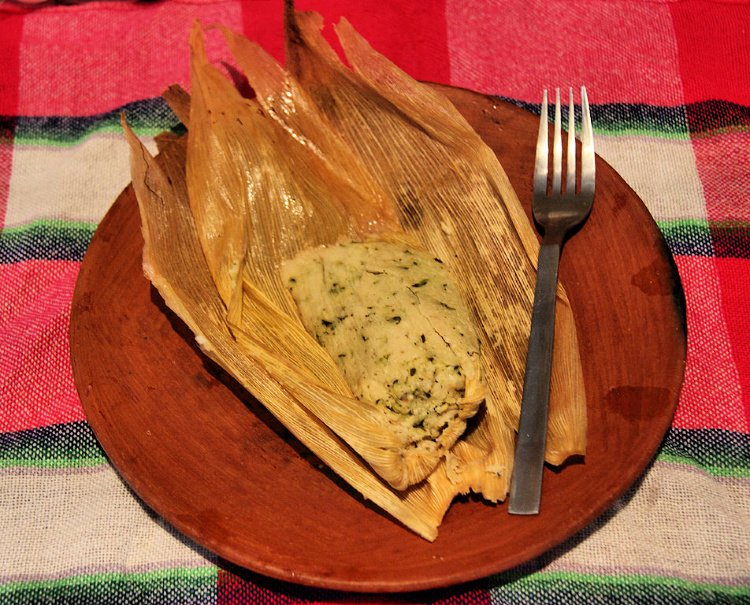
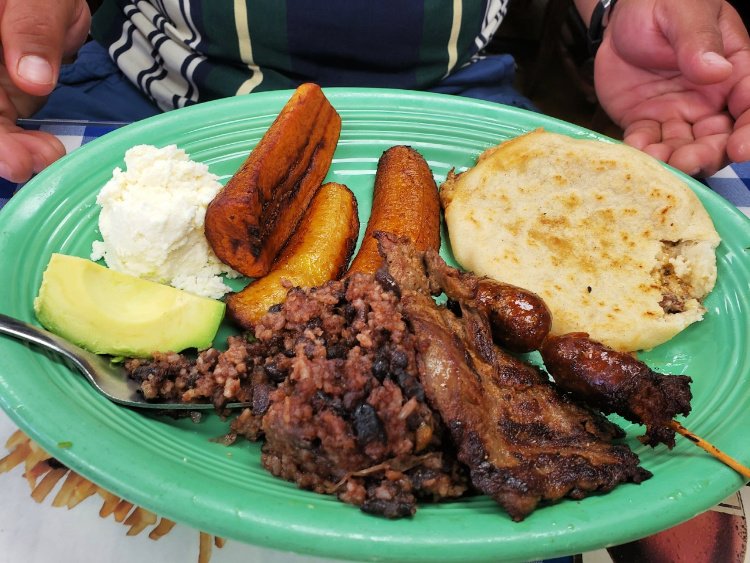


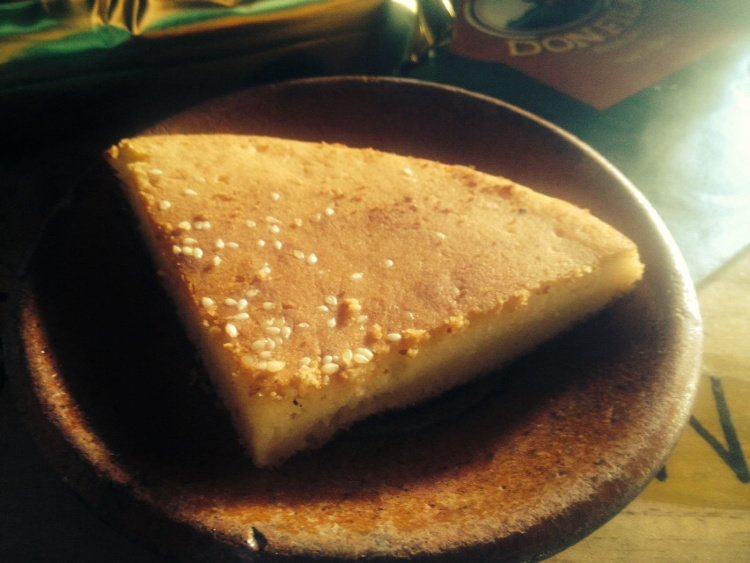
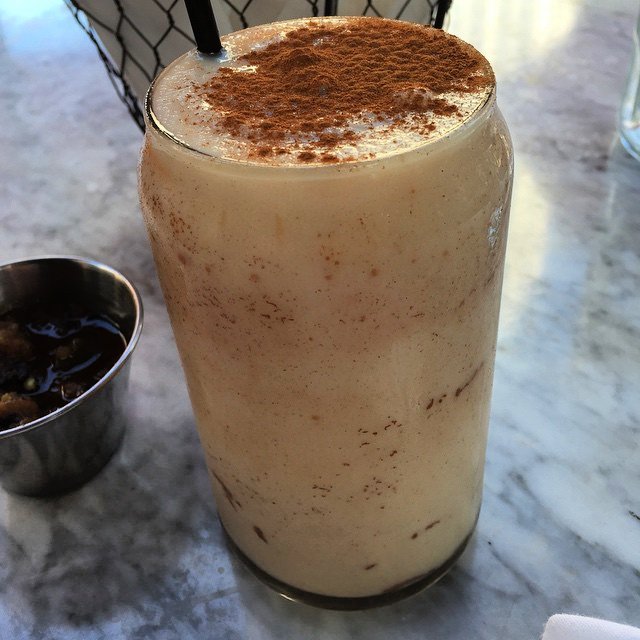



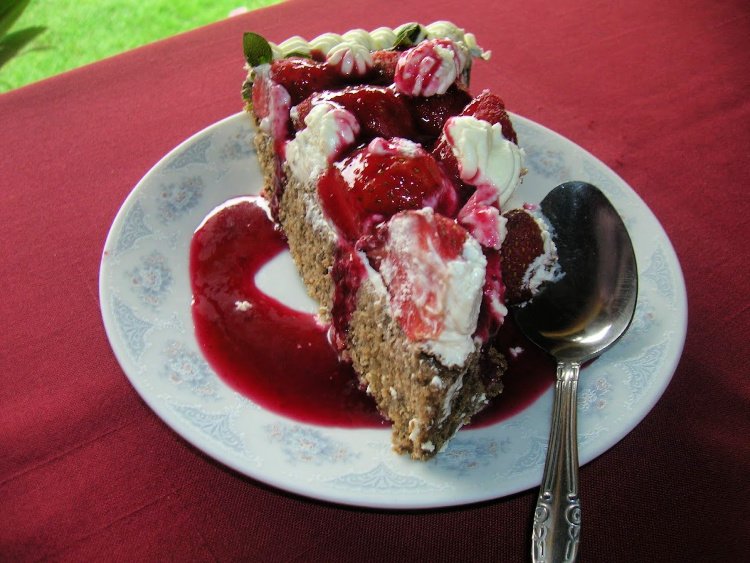



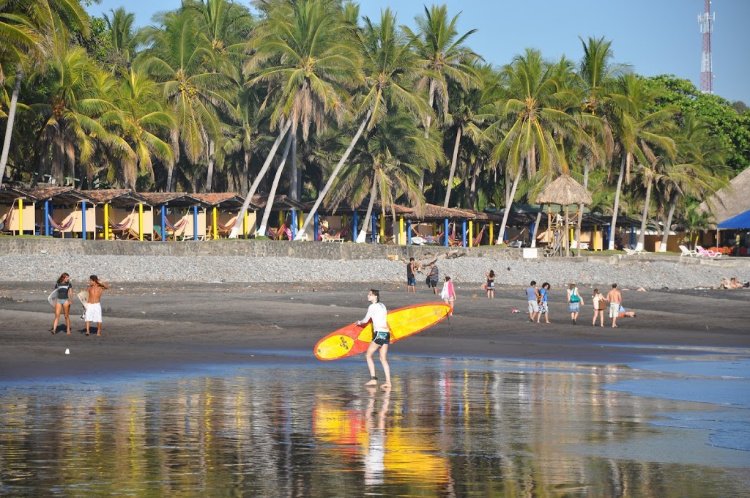
Norbert says
Pretty good food overview… yumm! It’s funny that when I was in Guatemala I skipped every single Pollo Campero I saw (trying to stay away from “fast foods”), but then, when i saw a Pollo Campero in El Salvador I couldn’t resist it anymore and went straight in. I have to say that chicken is delicious!
Ruth says
I know. Sometimes you want to eat something more authentic but Pollo Campero gets into your mind subliminaly because it is every where. Also, it is always good to go with local friends since they like it so much.
inka says
My, my, what choices. I love sea food but what I really would like to try is iguana. How exotic.
Ruth says
My husband says he would like to go with you to try that iguana. He also says he can show you were to get other exotic items.
Jared says
I’ve had the iguana in El Salvador…..it was delicious and tasted a lot like chicken! LOVE Salvadoran food!!
Cam @ Traveling Canucks says
YUM!! You’ve done a good job sampling the culinary delights!
Ruth says
Ha!! The sacrifices you have to make while traveling. It has been hard but someone has to do it.
Debbie Beardsley @ European Travelista says
Why is it that salsa makes everything look even better?
Sounds like a place for foodies! I would stick with the more traditional meats but everything else looks great. We had Yucca at a Peruvian restaurant in San Francisco and it was really good.
thanks for sharing this culinary trip through El Salvador!
Ruth says
Debbie,
There are so many choices. Unfortunately, a lot of people do not know about the gastronomic wonders of this place. Like I said, this is just a simple description. Once I was done writing the article, my husband revised it (he is from El Salvador) and told me about a lot of other dishes that I have never heard about it.
Jeremy Branham says
Ruth, the food looks good with some interesting choices. El Salvador would definitely be an interesting place to visit. Not sure I would partake of all the food options but most of it looks tasty!
And you’ll be happy to know, I don’t disagree with you on a post for once! 🙂
Ruth says
Jeremy,
Glad to see we are not disagreeing on this. And, for sure, the food of El Salvador is worth a visit.
Wifey of a Roadie says
I haven’t had breakfast and that Disayuno Tipico sounds amazing right about now! Awesome post!
Ruth says
We should have more tipicos around so we can have one once in a while. Especially, like the one I took the picture. It is from a hotel/restaurant in the town of Apaneca. The tipico from there is the best I have tasted in El Salvador.
jade says
Empanadas are so good- craving one right now! Love the beans photo- I’ve seen that in Mexico too.
Michael Figueiredo says
You’re right — all the food sounds delicious! (Well, maybe not the armadillo or iguana). There are a few Salvadoran restaurants in L.A. so I’ve tried pupusas before. They are good!
Akash says
I am 100 percent autntheic Salvadorena. My daughters and I made pupusas the other day. I was happy to find the recipe for the salsa which is unlike a mexican salsa for dips or enchiladas. Authentic pupusas are also filled with chicharon, I believe that is like fried pork. Or any of the fillings given in this recipe (cheese, beans or a combination revueltas ). Today pupusas can be found with any filling you can think of. They are typical to El Salvador and Guatemala. They are defintely eaten by tearing and opening up to add the curtido and salsa. Thank you so much for this recipe which shares our culture.
jamie - cloud people adventures says
i love pupusas (but i must say that i like the honduran baleadas better!)
before i met jess, i frequented pollo campero on the odd occasion. i thought it was ok, some seemed better than others.
im not sure if they have it in el sal, but in honduras my favourite fruit was mangosteen!
delicious post!
The Travel Chica says
Me encanta pupusas! And they only cost 25 cents!
I really loved El Salvador. I ate my first iguana there too. The other thing I loved was Sopa de Gallino Indio. And the licuados…. couldn’t get enough of those. You’re making me want to go back!
Kathlene Bushfield says
I love their dishes with classic ingredients of Mexican food, I recommend it.
brendalifeview says
Some of y’all are so brave with the exotic foods. I haven’t tried sopa de pato but that’s as wild as I’m gonna get!